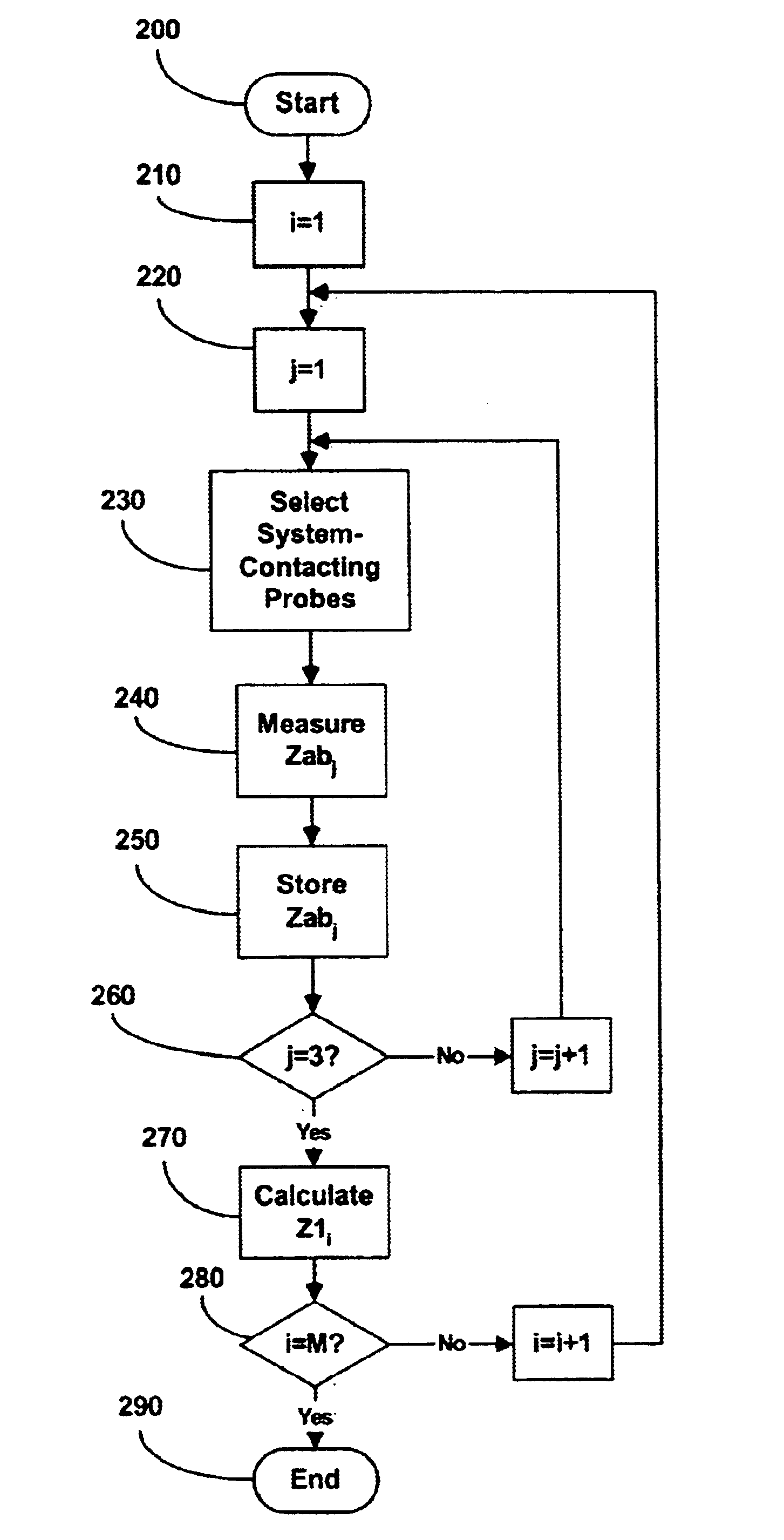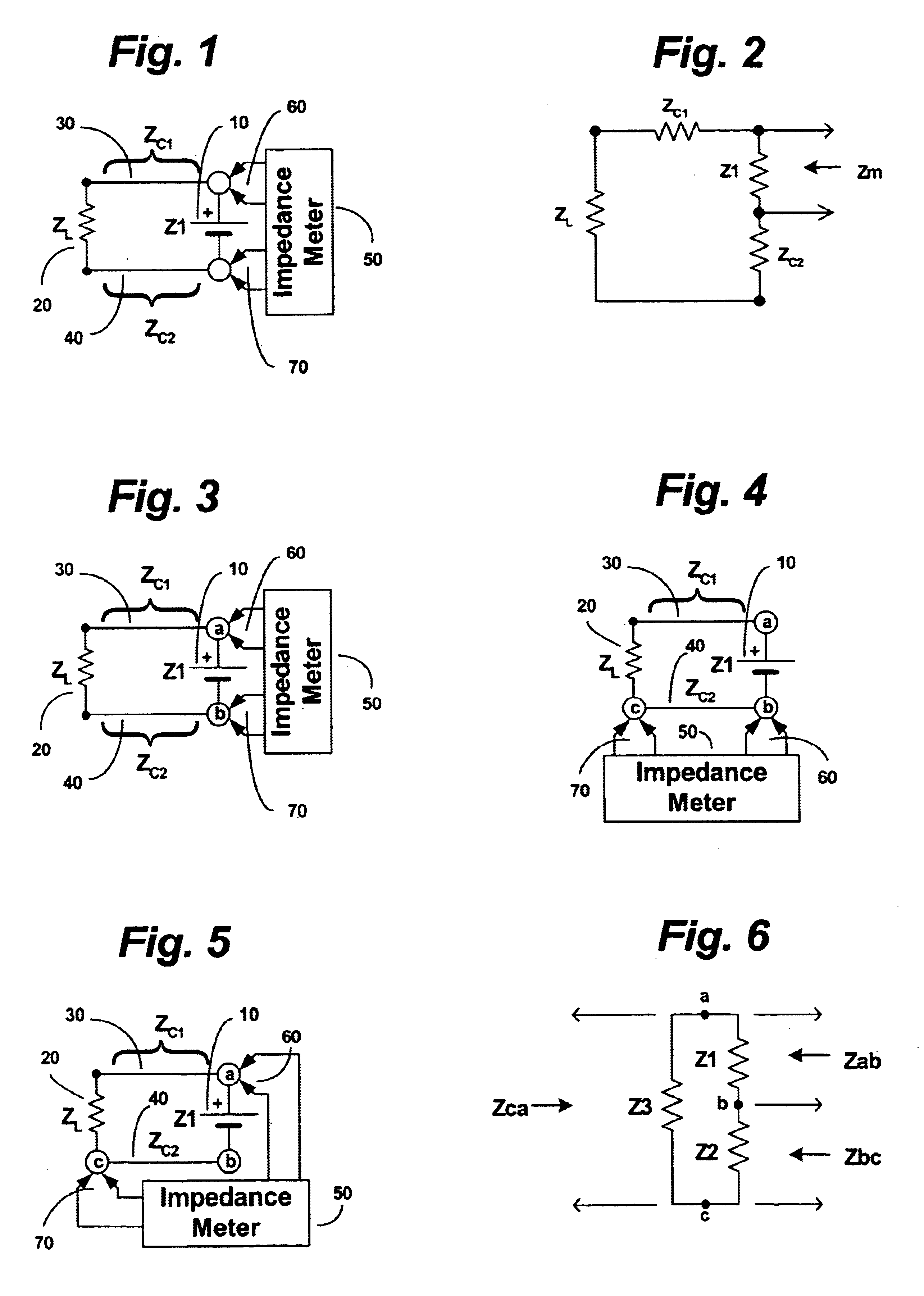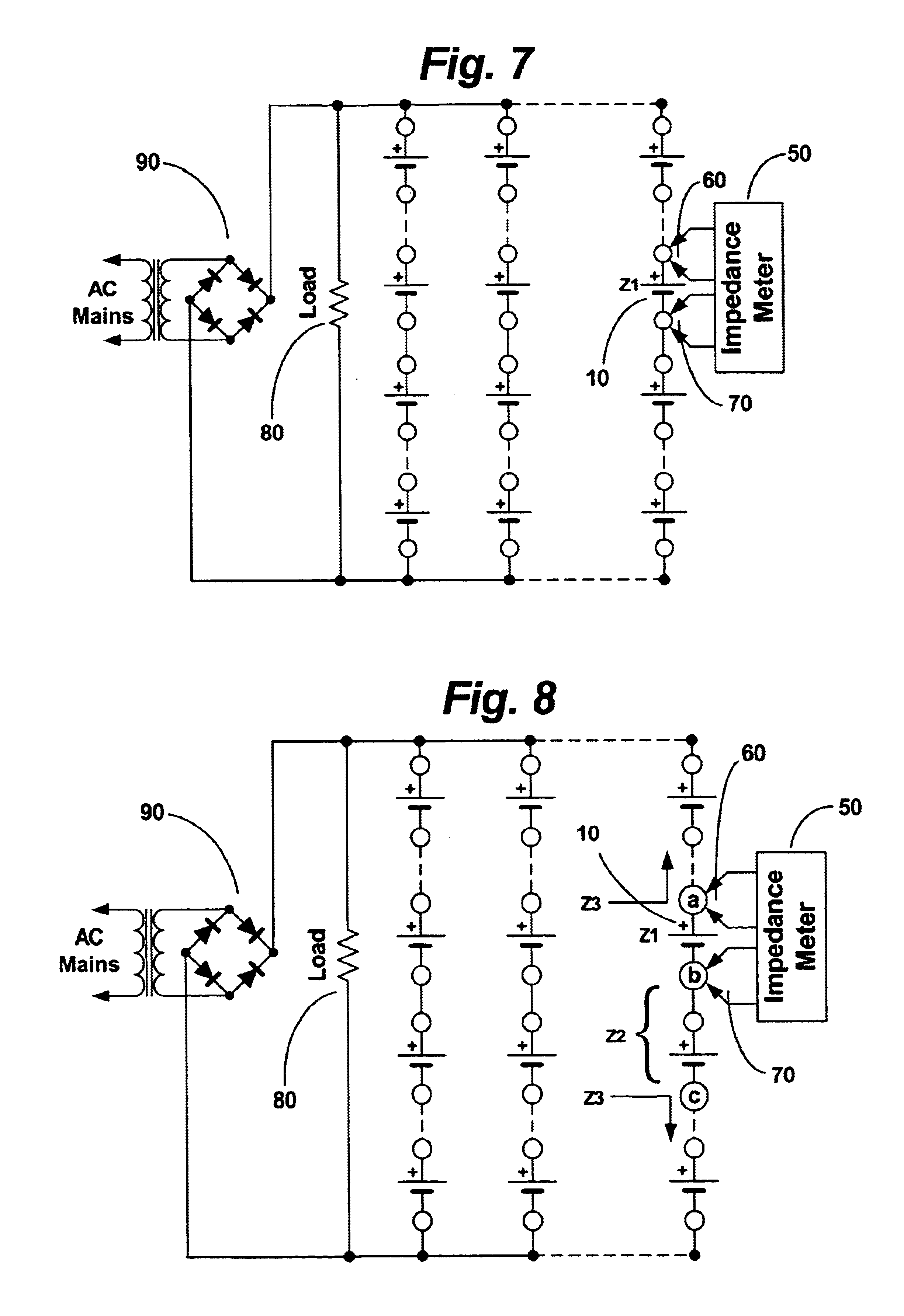Method and apparatus for testing cells and batteries embedded in series/parallel systems
a technology of series/parallel systems and cells, applied in the field of electrochemical testing of electrochemical cells and batteries, can solve problems such as significant errors in disclosed techniques
- Summary
- Abstract
- Description
- Claims
- Application Information
AI Technical Summary
Benefits of technology
Problems solved by technology
Method used
Image
Examples
Embodiment Construction
[0029]Consider FIG. 1. This figure illustrates measuring the impedance of a cell / battery 10 embedded in a very simple system comprising cell / battery 10 connected to load 20 through interconnecting conductors 30 and 40. Impedances Z1, ZL, ZC1, and ZC2 represent the impedances of cell / battery 10, load 20, interconnecting conductor 30, and interconnecting conductor 40, respectively. Impedance meter 50, which may be of the type disclosed by Champlin in the four patents referenced above, couples to the two terminals of cell / battery 10 with Kelvin input probe 60 and Kelvin input probe 70. As is well known, Kelvin probes comprise two separate electrical connections to each contact point—one for current and one for voltage. Their purpose is to negate the effects of contact and lead-wire resistance. Although Kelvin probes are usually required to obtain accurate measurements with the very small impedance values encountered in most battery systems, the “three-point” measurement technique discl...
PUM
 Login to View More
Login to View More Abstract
Description
Claims
Application Information
 Login to View More
Login to View More - R&D
- Intellectual Property
- Life Sciences
- Materials
- Tech Scout
- Unparalleled Data Quality
- Higher Quality Content
- 60% Fewer Hallucinations
Browse by: Latest US Patents, China's latest patents, Technical Efficacy Thesaurus, Application Domain, Technology Topic, Popular Technical Reports.
© 2025 PatSnap. All rights reserved.Legal|Privacy policy|Modern Slavery Act Transparency Statement|Sitemap|About US| Contact US: help@patsnap.com



